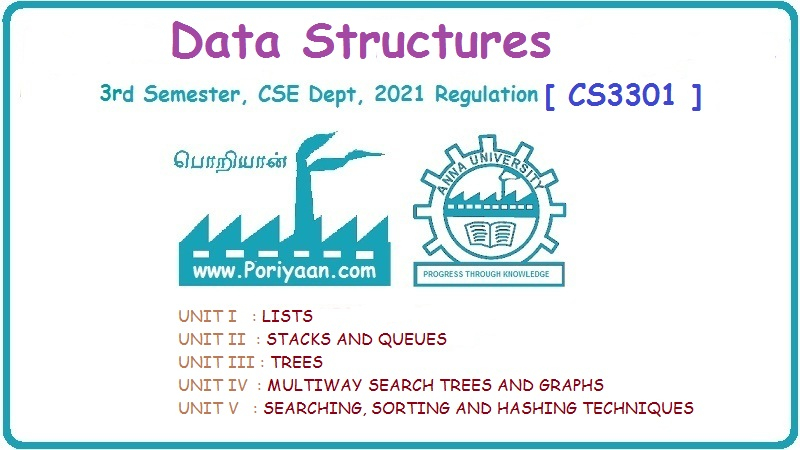Data Structure: Unit I: Lists
Abstract Data Types (ADT)
Operations, Data Structure, Examples
The abstract data type is a triple of D - Set of domains, F - Set of functions, A - Axioms in which only what is to be done is mentioned but how is to be done is not mentioned.
Abstract Data Types (ADT)
The
abstract data type is a triple of D - Set of domains, F - Set of functions, A -
Axioms in which only what is to be done is mentioned but how is to be done is
not mentioned.
In ADT,
all the implementation details are hidden. In short
ADT =
Type + Function names + Behavior of each function
ADT Operations
• While
modeling the problems the necessary details are separated out from the
unnecessary details. This process of modeling the problem is called
abstraction. It is represented by Fig. 1.2.1.
• The
model defines an abstract view to the problem. Thus the model focuses only on
problem related stuff and that you try to define properties of the problem.
• These properties include
i) The
data which are affected and
ii) The
operations which are identified

•
Various Abstract Data Type operations are
1. Create: This operation creates the
database.
2. Display: This operation is for
displaying all the elements of the data structure.stagi
3. Insertion: By this operation the element
can be inserted at any desired position.
4. Deletion : By this operation any
desired element can be deleted from the data structure.
5. Modification: This
operation modifies the desired element's value by any desired new value.
ADT Data Structures
The ADT
operations are carried out with the help of data structure. This part describes
the structure of the data used in the ADT in an informal way. Various data
structures that can be used for ADT are Arrays, Set, Linked list, Stack, Queues
and so on.
Examples
1. ADT for Set
If we
want to write ADT for a set of integers, then we will use following method
AbstractDataType Set
{
Instances: Set is a collection of
integer type of elements.
Preconditions: none
Operations:
1. Store () This operation is for
storing the integer element in a set.
2. Retrieve (): This
operation is for retrieving the desired element from the given set.
3. Display (): This
operation is for displaying the contents of set.
}
There is
a specific method using which an ADT can be written. We begin with keyword
AbstractDataType which is then followed by name of the data structure for which
we want to write an ADT. In above given example we have taken Set data
structure.
. • Then
inside a pair of curly brackets ADT must be written..
. • We
must first write instances in which the basic idea about the corresponding data
structure must be given. Generally in this section definition of corresponding
data structure is given.
• Using
Preconditions or Postconditions we can mention specific conditions that must be
satisfied before or after execution of corresponding function.
• Then a
listing of all the required operations must be given. In this section, we must
specify the purpose of the function. We can also specify the data types of these
functions.
2. ADT
for Arrays
AbstractDataType
Array
{
Instances:
An array A of some size, index i and total number of elements in the array n.
Operations:
}
1. Store () This operation stores the
desired elements at each successive location.
2. display () This operation displays the
elements of the array.
Review Question
1. Define data abstraction. Write the ADT for the data structure in
which the same condition can used appropriately, for checking over flow and
underflow. Define all basic function of this ADT. (Hint: Please refer stack
ADT) AU May-19, Marks 9
Data Structure: Unit I: Lists : Tag: : Operations, Data Structure, Examples - Abstract Data Types (ADT)
Related Topics
Related Subjects
Data Structure
CS3301 3rd Semester CSE Dept | 2021 Regulation | 3rd Semester CSE Dept 2021 Regulation
